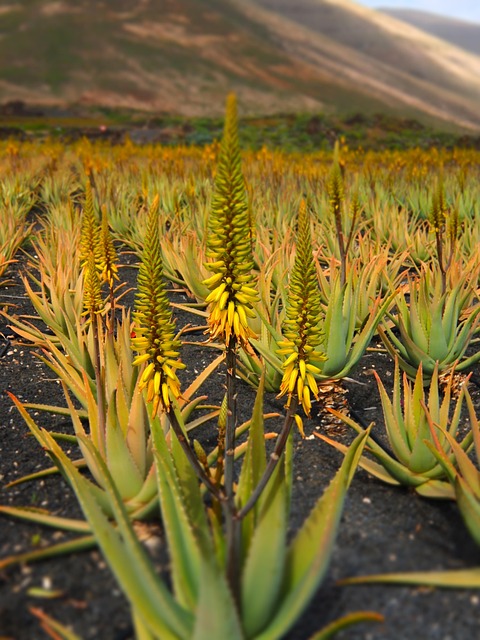Winter poses challenges for plants, requiring tailored plant care for all seasons. For outdoor plants, protect from cold winds and ensure adequate water. Indoor plants thrive with consistent temperature, humidity, and light but require less water during slower growth periods. Essential strategies include using humidifiers or grouping plants, maintaining optimal temperatures, providing grow lights if natural sunlight is insufficient, misting leaves, regular feeding, and seasonal pruning. Winterizing the garden by insulating plants, moving sensitive species to protected areas, and mulching further ensures year-round plant health. Seasonal adjustments in watering, light, and nutrient schedules are crucial for indoor plants, with regular maintenance key. Protecting outdoor plants from frost and adjusting nutrition supports their overall health throughout the year.
In the transition from vibrant summer to chilly winter, understanding how cold weather affects plants is crucial for successful year-round plant care. This guide offers essential strategies for maintaining both indoor and outdoor greenery during the colder months. From recognizing the unique challenges of winter to implementing effective protection measures, learn how to nurture your plants through this seasonal shift. Discover tips for optimal indoor plant care and robust outdoor plant protection techniques, ensuring your green friends thrive in all seasons.
Understanding Winter's Impact on Plants
Winter can be a challenging time for plants, both indoors and out. While many plants are adaptable, extreme cold temperatures, fluctuating light levels, and reduced humidity can stress them, leading to poor growth or even death. Understanding how winter affects your plants is the first step in ensuring their longevity during this season.
Plant care for all seasons requires specific strategies to mitigate these effects. For outdoor plants, this might involve moving delicate varieties inside, providing insulation against cold winds, and ensuring they receive adequate water despite reduced rainfall. Indoor plants, on the other hand, benefit from maintaining consistent temperatures, humidity levels, and light exposure, as well as being mindful of overwatering during shorter days when their growth naturally slows down.
Indoor Plant Care During Winter
Winter can be a challenging time for indoor plants, as lower temperatures and reduced light levels can slow their growth and impact overall health. To ensure your plants thrive year-round, including during the colder months, consider adjusting your plant care routine. One of the most important aspects is maintaining consistent humidity; using a humidifier or grouping plants together can help create a microclimate that mimics their natural environment. Regularly misting leaves with water is another effective way to combat dry air, especially for tropical species accustomed to high humidity.
In addition to humidity, maintaining proper temperature and light levels is crucial for indoor plant care during winter. Most houseplants prefer warm days and cool nights, so aim to keep them away from drafts and heating vents. Positioning plants near windows can provide ample natural light, but remember that winter sunlight is less intense, so consider using grow lights if your plants require bright conditions to thrive. Regular feeding with a balanced, water-soluble fertilizer during the growing season ensures indoor plants have the nutrients they need to remain healthy even when growth slows down in colder temperatures.
Outdoor Plant Protection Strategies
Winter brings unique challenges for gardeners, especially when it comes to protecting outdoor plants from the cold. Here are some strategies to ensure your green friends thrive during the colder months. One effective approach is to prepare and insulate plants ahead of time, including moving sensitive varieties into protected areas or greenhouses. This process involves carefully assessing each plant’s needs, considering factors like root systems, growth habits, and hardiness zones.
Additionally, using mulches and organic coverings can create an insulating layer, protecting roots from extreme cold and preventing water loss. For trees and shrubs, pruning and trimming in late autumn can reduce the risk of damage from ice and snow, promoting healthier growth. Implementing these outdoor plant care techniques is essential for maintaining vibrant and robust plants throughout all seasons.
Seasonal Transition and Plant Maintenance
As seasons change, so do the needs of our indoor and outdoor plants. Seasonal transitions require a shift in plant care routines to ensure they thrive year-round. During autumn and winter, many plants enter a dormant phase, slowing down their growth and requiring less frequent watering. This is especially true for tropical plants brought indoors during colder months. Understanding these natural cycles is crucial for effective plant care for all seasons.
Regular maintenance is key. Check your plants frequently to ensure they’re getting the right amount of light, water, and humidity. Indoor plants might need supplemental lighting during shorter winter days, while outdoor plants may benefit from protective coverings to shield them from frost. Adjusting watering schedules and providing seasonal nutrients will help maintain plant health and encourage vibrant growth when warmer days return.
Winter can be a challenging time for plants, both indoors and out. However, with proper understanding and techniques, you can ensure your greenery thrives year-round. By implementing strategies discussed in this article, from protecting indoor plants from dry air and limited sunlight to safeguarding outdoor specimens against freezing temperatures, you’ll create a robust plant care for all seasons routine. Remember, seasonal transitions require thoughtful maintenance, ensuring your plants remain healthy and vibrant throughout the changing climate.
